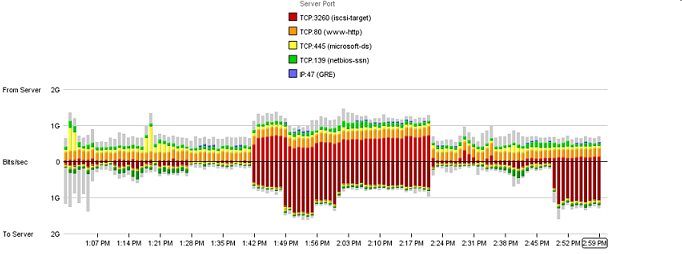Storage Traffic
There are many good reasons to use networked storage: the storage resources can be shared, replicated and backed up independently of the systems that use them. In a virtual server environment, using networked storage for the virtual machine images simplifies the replication of virtual machines and the migration of virtual machines between servers (e.g. VMWare vMotion, Citrix XenMotion or Xen Live Migration).
In addition, the migrating of storage from a dedicated storage area network (SAN) to a single Converged Enhanced Ethernet (CEE) network promises to reduce cost and create a more flexible data center infrastructure. However, this migration also places additional demands on the LAN infrastructure.

Regardless of the type of networked storage (iSCSI, NFS, AoE or FCoE), the management of network bandwidth is critical to successful deployment and operation. For example, the chart above shows site-wide traffic from a large campus network broken out by protocol. The storage traffic (iSCSI) is clearly the largest load on the network, dwarfing the amount of web (HTTP) traffic.
While the overall traffic breakdown is useful, more detail is needed to understand the relationships between storage and servers. In order to provide this information, Traffic Sentinel uses traffic flow measurements to create a service dependency map.
